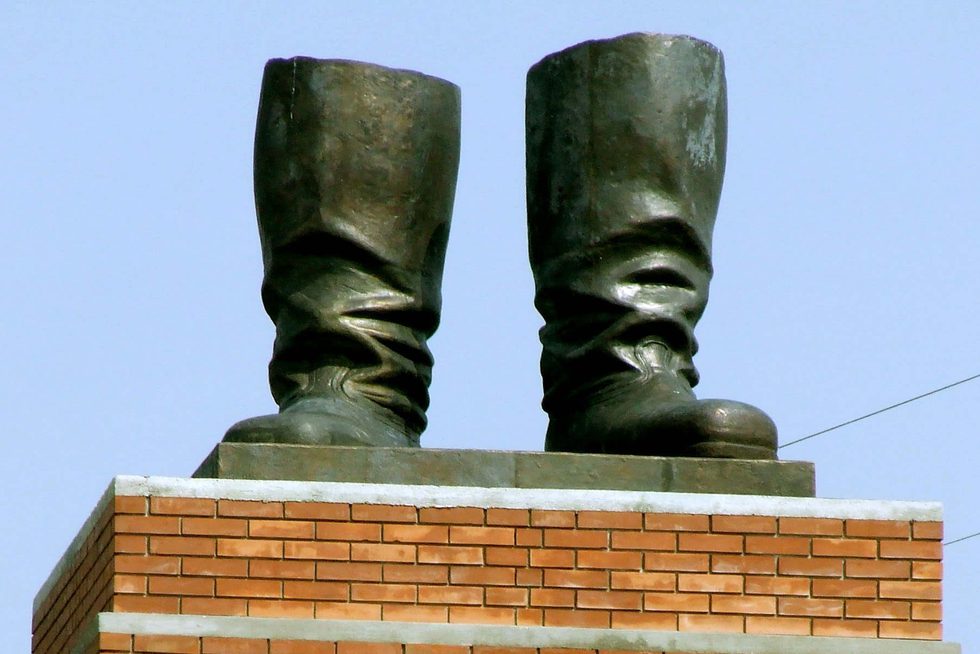Geopolitics of (In)security on Europe’s Baltic Frontier
From the Series: Lessons for Liberalism from the “Illiberal East”
From the Series: Lessons for Liberalism from the “Illiberal East”

In 2014, Lithuanian president Dalia Grybauskaitė described Russia as a “terrorist state,” warning that if “open aggression against its neighbor is not stopped, then that aggression might spread further into Europe,” with the Baltics as the next target. While Russia’s military presence has not yet materialized, after the occupation of Crimea and the war in eastern Ukraine the Baltics have emerged as an eventual war frontier. The Baltic frontier has been consolidated by Russia’s military presence in the Kaliningrad region (the largest since the Cold War) and the NATO enhanced forward presence, including multinational battlegroups and heavy military equipment in Lithuania, Latvia, and Estonia. The geopolitics of security, backed by military and propaganda on both sides, have turned the Baltic frontier into a zone of insecurity, marking the end of the postsocialist era in the Baltics.
This Baltic frontier has historical roots. All three Baltic states fell under the Soviet sphere of influence in 1939, when Nazi Germany and the USSR signed the Molotov-Ribbentrop Pact of nonaggression, dividing Europe. The end of World War II sealed the fate of the Baltic states by leaving them under Soviet rule until 1991. While Lithuania’s government allowed Soviet troops to be stationed in Lithuania without military resistance in 1940, more recently the government and the media have presented Lithuania as a military power ready to defend its own sovereignty as well as the security of Europe. Moreover, according to a promotional video from the Foreign Ministry titled “Meet Lithuania," Lithuania is “working together with NATO allies and doing everything to ensure peace and stability throughout the world.”
Lithuania’s defense budget has doubled since 2013, projected to reach 2.07 percent of GDP by 2018 and 2.5 percent by 2020. If defense spending reaches 2.5 percent of GDP, Lithuania will have one of the largest defense budgets among NATO countries, unless other states increase their budgets significantly. In March 2015, the Lithuanian government reinstated military conscription. The State Security Department expanded surveillance of minority populations, which are seen as a potential target of Russia’s provocations. Some Russian channels were blocked to protect citizens from Russia’s propaganda. Discussions of hybrid threats, disinformation, fake news, and cyberattacks have become routine. People are invited to “try themselves” in the army, to be vigilant and acquaint themselves with survival tactics, and to learn how to resist propaganda or recruitment by Kremlin agents. The public landscape has been redefined with marching NATO troops and Lithuanian soldiers on state holidays and other events. New traditions, such as “days in uniform” with uniformed soldiers appearing at work, in college classrooms, or pushing their children’s strollers, aim to integrate the military with society and boost patriotism.
The geopolitical insecurity that defines the Baltic frontier is essential in understanding how Lithuania can be a strong ally of NATO and the European Union, a proponent of democratic politics, and, at the same time, a country that embraces militarism and nationalism as a politics of recognition.
The emergence of the Baltic frontier after 2014 marks the end of postsocialism and the beginning of a new historical and political era in the Baltics. These eras are shaped by different temporalities: while postsocialism was primarily defined by rearticulation of the past, the post-2014 frontier era is shaped by anticipation of the future. The two periods represent different ideologies of sovereignty: in the postsocialist framework, Lithuania is an eastern province of Europe, inferior to other Western European nations, insufficiently democratic and liberal (see Klumbytė 2011), while the frontier era posits the country as the frontline of Western democracy and security. These periods are also defined by different geopolitical regimes: postsocialism was structured by integration into the European Union and NATO, while the frontier era is marked by diminishing EU authority and influence. The frontier era is also the time of openly-voiced anti-EU national ideologies in some intellectual and political circles. The geopolitical insecurity that defines the Baltic frontier is essential in understanding how Lithuania can be a strong ally of NATO and the European Union, a proponent of democratic politics, and, at the same time, a country that embraces militarism and nationalism as a politics of recognition.
Unlike the Iron Curtain, the iconic meeting point between the Eastern and Western spectacles of secrecy (Vatulescu 2015), the Baltic frontier is also a place of spectacles of war. Russian jets violate NATO airspace, NATO troops travel with NATO and Lithuanian flags on highways, and military equipment is displayed and tested on both sides. In 2017, in anticipation of the Zapad Russian military exercise, the Ministry of Interior Affairs launched several mock military exercises in cities, including one in Šalčininkai, an area densely populated by Lithuanian Poles. In Šalčininkai, participants established the “Šalčininkų People’s Republic,” modeled after the Donetsk People’s Republic, a self-proclaimed state in the Donetsk Oblast of Ukraine, violating the script of the Ministry for Interior Affairs. On the Baltic frontier, relations are dramatized, emotions are heightened, and the circulation of mock events, fake news, propaganda clips, and censoring are intensified. Theatricality defines both the Iron Curtain and the Baltic frontier. In this sense, the era of the Baltic frontier more closely resembles socialism, the time of relative geopolitical security and uneventfulness in the Baltics, rather than postsocialism.
Klumbytė, Neringa. 2011. “Europe and Its Fragments: Europeanization, Nationalism, and the Geopolitics of Provinciality in Lithuania.” Slavic Review 70, no. 4: 844–72.
Vatulescu, Cristina. 2015. “Translating Secrecy: The Iron Curtain Viewed from the East, West, and from Right Under.” Perspectives on Europe 45, no. 1: 25–40.